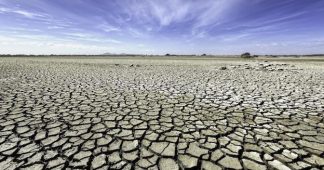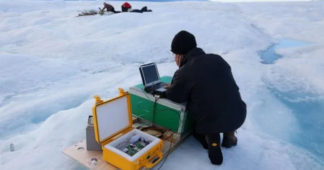Florida Map Shows Where State Will Become Underwater From Sea Level Rise
by Aleks Phillips
Earlier in March, astrophysicist Neil DeGrasse Tyson published a post on X, formerly Twitter, which showed Florida and much of America’s East and Gulf Coasts consumed by water. The post subsequently went viral, racking up 4.9 million views.
The TV scientist noted that Florida was relatively flat, making it “supremely susceptible to sea-level rise during climate change.” Many of the replies questioned the truth of the projection, or climate change itself.
So is Florida really going to be entirely consumed by the Atlantic Ocean as sea levels rise?
Tyson’s map appears to be lifted from the September 2013 issue of the National Geographic, which considered what different continents would look like if all of the world’s ice melted, causing 216 feet of sea level rise.
Continue reading at www.msn.com
Our underwater future: What sea level rise will look like around the globe
The planet is warming rapidly, resulting in historic drought, deadly floods and unusual melting events in the Arctic. It is also causing steady sea level rise, which scientists say will continue for decades.
A new study from Climate Central, a nonprofit research group, shows that roughly 50 major coastal cities will need to implement “unprecedented” adaptation measures to prevent rising seas from swallowing their most populated areas.
The analysis, in collaboration with researchers at Princeton University and the Potsdam Institute for Climate Impact Research in Germany, resulted in striking visual contrasts between the world as we know it today and our underwater future, if the planet warms to 3 degrees Celsius above pre-industrial levels.
Continue reading at edition.cnn.com
15 cities that could be underwater by 2030
Global warming can be difficult to properly visualise. If you’re not directly threatened by rising sea levels, suffering water shortages or ravaged by wildfires, how do you know it’s really happening? It can all seem a little abstract.
That’s why projects like Climate Central are so essential. This website creates maps that show which parts of the world could find themselves threatened by rising sea levels. So – as pollution continues unabated, the planet keeps getting warmer and the polar ice caps keep melting – which cities around the globe could find themselves below tide level as early as 2030? To find out, we looked at Climate Central’s latest maps, which are based on the IPCC’s 2021 report – some of the most reliable climate-change data out there.
Continue reading at www.timeout.com
Climate Change Projection Shows Piraeus, Thessaloniki Under Water
Climate change models created by Climate Central, an independent organization of top scientists and journalists, show the devastation that rising sea levels could cause on coastal cities, including those in Greece, such as Piraeus and Thessaloniki.
The models were created based off the findings of a recent research paper written by scientists from Climate Central in collaboration with researchers from Princeton University and the Potsdam Institute for Climate Impact Research in Germany.
The paper, like the projections, compares the future if we continue our current path of warming the planet without implementing substantial changes to reduce emissions to the status of the Earth if we take immediate steps to cut yearly emissions in half by 2030
Continue readin at greekreporter.com
Rising Seas Will Erase More Cities by 2050, New Research Shows
Rising seas could affect three times more people by 2050 than previously thought, according to new research, threatening to all but erase some of the world’s great coastal cities.
The authors of a paper published Tuesday developed a more accurate way of calculating land elevation based on satellite readings, a standard way of estimating the effects of sea level rise over large areas, and found that the previous numbers were far too optimistic. The new research shows that some 150 million people are now living on land that will be below the high-tide line by midcentury.
Continue reading at www.nytimes.com
We remind our readers that publication of articles on our site does not mean that we agree with what is written. Our policy is to publish anything which we consider of interest, so as to assist our readers in forming their opinions. Sometimes we even publish articles with which we totally disagree, since we believe it is important for our readers to be informed on as wide a spectrum of views as possible.











